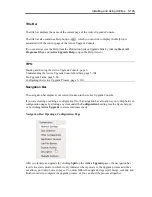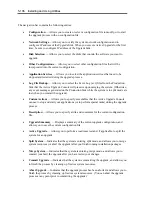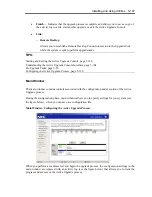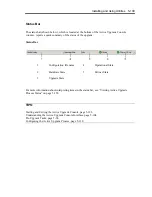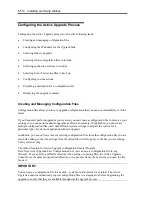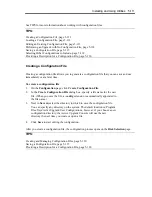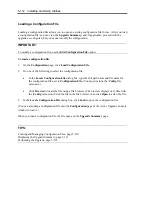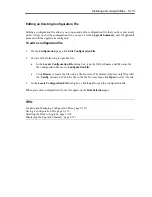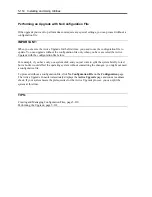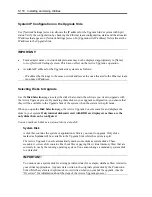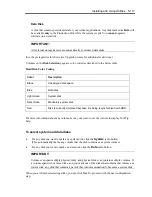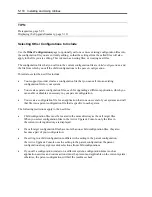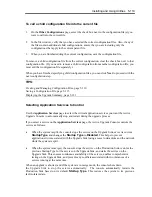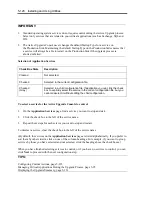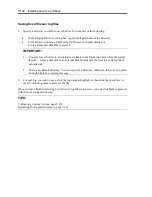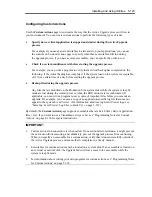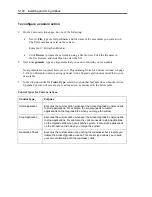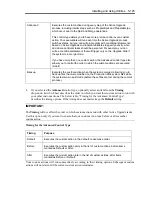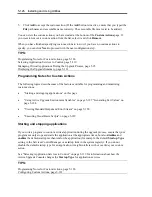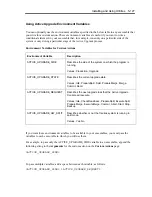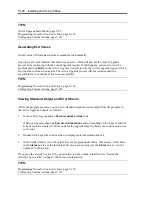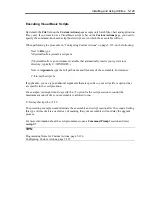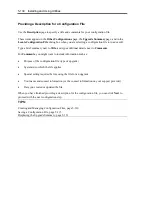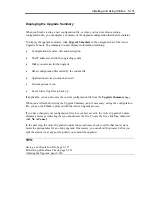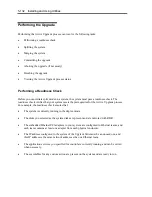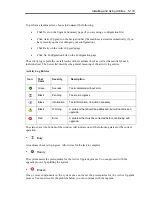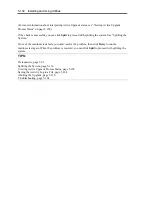
Installing and Using Utilities 5-119
To call a child configuration file into the current file
1.
On the
Other Configurations
page, select the check box next to the configuration file(s) you
want to call into the current file.
2.
In the file window, verify that you have selected the correct configuration files. Also, if any of
the files contain additional child configurations, ensure that you are including only the
configurations that apply to the current parent file.
3.
When you are finished editing the current configuration, save the configuration file.
To remove a child configuration file from the current configuration, clear the check box next to that
configuration file. (If you need to remove a child configuration from another configuration file, you
must edit that configuration file separately.)
When you have finished specifying child configuration files, you can click
Next
to proceed with the
next configuration step.
TIPS:
Creating and Managing Configuration Files, page 5-110
Saving a Configuration File, page 5-115
Displaying the Upgrade Summary, page 5-131
Selecting Application Services to Control
Use the
Application Services
page to select the critical application services you want the Active
Upgrade Console to automatically stop and restart during the upgrade process.
If you select a service on the
Application Services
page, the Active Upgrade Console controls the
service as follows:
•
When the system is split, the console stops the service on the Upgrade Side, saves its current
StartupType
, and changes the
Startup Type
to
Disabled
. This helps to prevent
application errors associated with the Upgrade Side losing access to data disks and the network
while the system is split.
•
When the system is merged, the console stops the service on the Production Side, restores the
previous Startup Type for the service on the Upgrade Side, and starts the service on the
Upgrade Side. This ensures continuous availability of the service, enables comprehensive
testing on the Upgrade Side, and prevents any conflicts associated with two instances of a
service running at the same time.
When an upgrade is aborted, and if the system is in merge mode, the console shuts down
the Upgrade Side to stop the service automatically. The console automatically restarts the
Production Side based on its default
Startup Type
. This restores the system to its previous,
fault-tolerant state.
Summary of Contents for Express5800/320Fd-MR
Page 13: ...v Appendix B I O Port Addresses This appendix lists factory assigned I O port addresses...
Page 19: ...xi THIS PAGE IS INTENTIONALLY LEFT BLANK...
Page 43: ...2 10 General Description Rear View...
Page 47: ...2 14 General Description CPU IO Module CPU IO module...
Page 67: ...2 34 General Description This page is intentionally left blank...
Page 79: ...3 12 Windows Setup and Operation 3 Confirm that RDR of the disk is cancelled...
Page 106: ...Windows Setup and Operation 3 39 This page is intentionally left blank...
Page 198: ...4 92 System Configuration This page is intentionally left blank...
Page 370: ......
Page 371: ...This page is intentionally left blank...
Page 389: ...6 18 Maintenance 3 Stop of PCI module 1 4 Start of PCI module 1...
Page 391: ...6 20 Maintenance This page is intentionally left blank...
Page 465: ...System Upgrade 8 31 board must not be mixed with N8804 005 or N8803 035...
Page 480: ......
Page 483: ......

